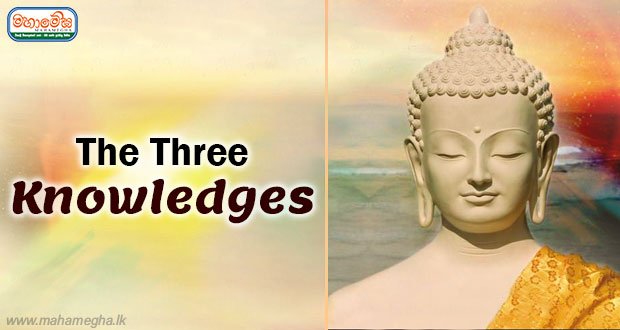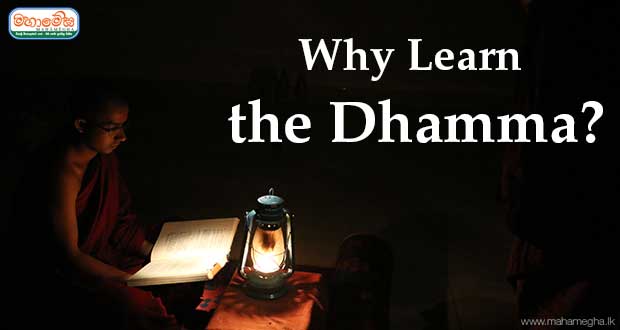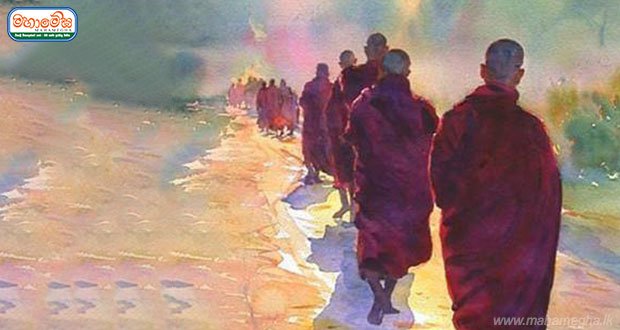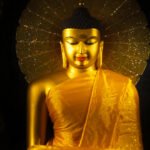Our teacher the Lord Buddha possessed an unparalleled ability to teach the Dhamma lucidly. This remarkable ability is further exemplified in the Buddha’s creative use of similes to explain the meaning of profound Dhamma points. The knowledge and wisdom of a Supreme Buddha is so far from an ordinary person. Explaining things that are so far outside the experience of his listeners is extremely difficult. Therefore, he used this technique of similes. A simile is used to compare the qualities of something we know and understand already with the qualities of something that we aren’t familiar with and that lies outside of our personal experience.
A very famous set of three similes was used by the Lord Buddha to explain the knowledges that arise in a Buddha, and many arahant disciples: the knowledge of recollecting past lives, the knowledge of the passing away and rebirth of beings, and the knowledge of the destruction of the taints.
The Knowledge of Recollecting Past Lives
Most of us cannot imagine what it would be like to remember our previous lives. For us it’s hard to even remember our own childhood in detail, let alone anything before that. But for a Buddha, this knowledge is not something mysterious or magical. It is just remembering. To help king Ajātasattu understand what it is like, Buddha used the simile of a traveler returning from a trip:
“Great king, suppose a man were to go from his own village to another village, then from that village to still another village, and then from that village he would return to his own village. He would think to himself: ‘I went from my own village to that village. There I stood in such a way, sat in such a way, spoke in such a way, and remained silent in such a way. From that village I went to still another village. There too I stood in such a way, sat in such a way, spoke in such a way, and remained silent in such a way. From that village I returned to my own village.’”
Now, most of us can imagine going on a trip because that is something we have done before. And we know that as soon as we get back we can easily remember the things that we did on that trip. In the same way, for a Supreme Buddha or a disciple who has gained this special knowledge it is simply a matter of remembering what they have done.
The Knowledge of the Passing Away and Rebirth of Beings
With this knowledge one can see how beings pass on from this life to another affected by their good and bad kamma. This differs from seeing the ordinary, immediate results of actions that someone with ordinary eyes can see. For example, say a thief gets caught and sent to prison. Anyone can see that this thief has gotten caught and sentenced because of that particular crime. But is that the end of the story? No. Maybe for the next 100 lives that individual has to experience the results of this crime by being separated from his property. An ordinary person can only guess at these things. But someone with the divine eye can see them clear as day. For an ordinary mind this is beyond comprehension.
The disciple who attains this knowledge sees with the divine eye, which is purified and surpasses the human, how beings pass away and are being reborn, inferior and superior, beautiful and ugly, fortunate and unfortunate, and he understands how beings pass on from one life to another in accordance with their kamma. How beings who engaged in misconduct by body, speech, and mind, after death, have been reborn in the planes of misery, in hell; and how these beings who engaged in good conduct by body, speech, and mind, after death, have been reborn in a good destination, in a heavenly world.
The simile the Lord Buddha gives shows just how simple it is for someone with this psychic power:
“Great king, suppose in a central square there were a building with an upper terrace, and a man with keen sight standing there were to see people entering a house, leaving it, walking along the streets, and sitting in the central square. He would think to himself: ‘Those people are entering the house, those are leaving it, those are walking along the streets, and those are sitting in the central square.’”
All of us have stood on a high building and looked down at the people on the ground. Did we have to make any magical effort to see them? No. We just looked out and saw them. So simple is it for someone with this ability.
Knowledge of the Destruction of the Taints
When someone becomes a fully enlightened arahant, the knowledge of this is immediately known to them. For an ordinary person, knowing the nature of the mind is difficult if not impossible. Not so for an arahant. They are able to see with perfect clarity the purity of their mind. Hard to imagine, isn’t it? That’s why the Supreme Buddha gives this simile:
“Great king, suppose there were a lake in a mountain recess, clear, limpid, and undisturbed, so that a man with good sight standing on the bank could see shells, gravel, and pebbles, and also shoals of fish swimming about and resting, he might think: ‘There is this lake, clear, limpid, and undisturbed, and there are these shells, gravel, and pebbles, and also these shoals of fish swimming about and resting’”
Even if we have never been high in the mountains, it is easy to imagine the purity of the air and the water. And we can easily imagine this clear, cool lake free from any mud, or pollution. Because of the purity of the water, we can see everything that is and isn’t present on the bottom of the lake. There is no doubt or confusion. We simply can see. In the same way for an Arahant whose taints are destroyed, seeing the purity of the mind is as easy as looking in this clear lake.
Not only do these similes help us respect and admire the lofty achievements of the Buddha and the great arahants, they also serve as a classic example of Buddha’s compassion in teaching in a way that we can easily understand.
By a Venerable Thero of Mahamevnawa Buddhist Monastery














Recent Comments